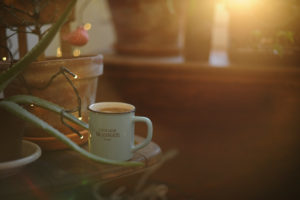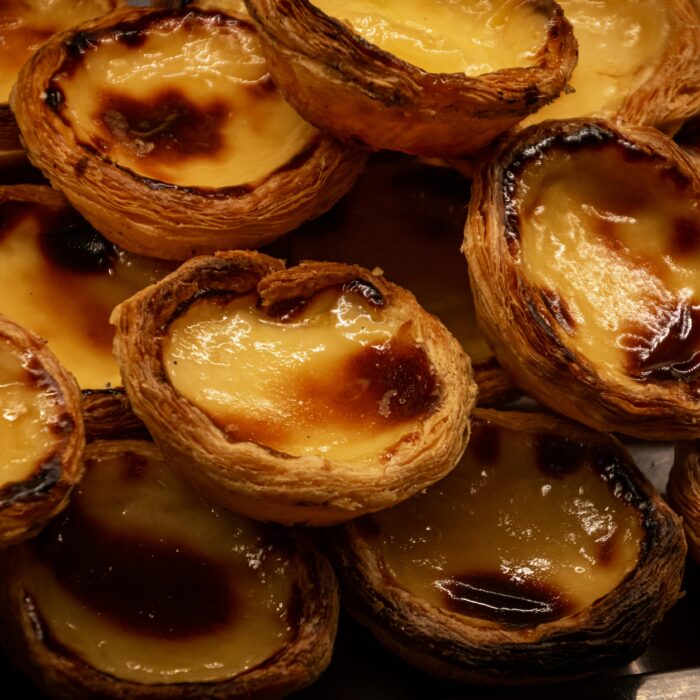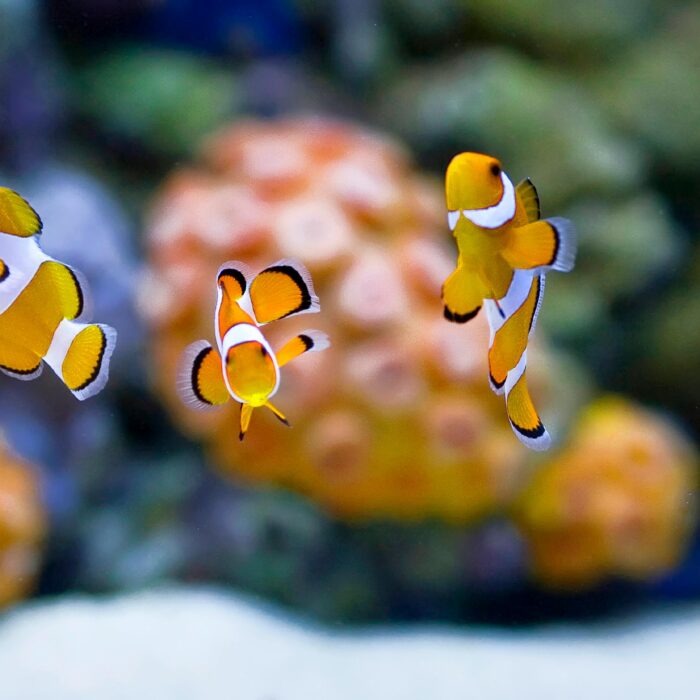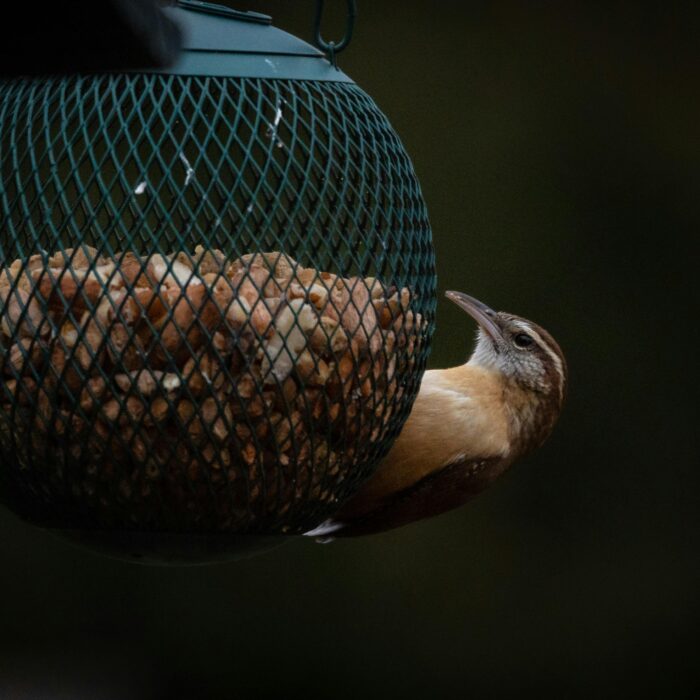You have no items in your cart. Want to get some nice things?
Go shopping
Ink. Java. Joe. Brew. Mud. All designations for a miracle in my life: coffee.
It wasn’t always this way. I remember being boastful of my lack of a coffee habit in the early ’90s. And not being coffee-dependent in Portland was a real distinction. It was a badge of honor. I was raised on the eternally topped-off New York diner dishwater coffee. This coffee was a minor appliance, not a work of art. Coffee was merely part of a complete breakfast of corned beef hash and scrambled eggs. So all this hoopla about coffee just seemed like posturing. At the time, all Portland had going for it was a rainy reputation, time-travel dive bars, the Wildwood restaurant, and a quad-shot of Depth Charge at Coffee People. But I wasn’t going to be sucked in. Coffee was just not worth it.
That was then. This is now.
And “now” means life on the lam, living in hiding, tucked away at home in the global witness protection program of COVID-19 quarantine. It has been disorienting to see all the actions and objects of everyday existence bend and break with the strain. Changing one simple element – you are not to leave your house – changes everything. Even coffee.
I eventually succumbed, of course. By the early 2000s I was a true believer. Having kids was my gateway to dependency. Living in captivity with toddlers, subjected to their systematic sleep deprivation tactics, coffee was my only hope. And it delivered – and then some. You see, I was drawn to the black muddy river by the bright promise of caffeine, but I drank all the deeper for java’s sensual side effects, for the flavor. Caffeine is the most widely used psychoactive substance in the world, but that it comes wrapped in subtle aromatic brocades and transportive flavor puzzles that make you grateful to have a face is just not fair.
This wasn’t really true of the first-wave coffee of my youth, but happily, I was forced to the fountain of Joe in the Pacific Northwest at the advent of the Third Wave. Taken black, this coffee was dark and delicious, produced and provided by real people rather than by a long anonymous supply chain like cans of refried beans. Eventually, the hegemony of my children receded, and I was left on the shore – older, scruffier, and clutching a warm aromatic Americano from Coava Roasters. Win-win.
Don’t get me wrong. Caffeine was still central to the experience, and remains the main attraction, but still, I could never abandon coffee and start popping caffeine pills like my friend Luke did. He didn’t like the taste, or that coffee made his teeth yellow. I never fully trusted him after learning about this choice. Luke was no aesthete, it turned out, no sensual gourmand. A life stained with coffee beats the crazed and colorless mania of popping caffeine pills. Right? Of course right.
The jolt, plus its culinary envelope, saved the day over and over again. Saved it from what? From long slogs starting early, from the uncertainty of morning, from the fuzzed-out focus fueled by the perennial fear of business ownership, from knowing people, showing up, from work. Imagine a drug so delicious it rivals wine. Bacchus forgive me – you get your stipend in the evenings, and anyway, you pass the baton to coffee come six o’clock a.m. A circuit of grace. And I figured this circuit would break, as did most of the others when Covid killed all my daily routines. I figured wrong.
Back in the early 2000s, fueled partly by my new passion, I worked with a Portland-based coffee importer to build an educational iPad app for coffee farmers in the Americas and Africa. The iPads were kept at distribution hubs; when farmers came in from their plantations to deliver truckloads of green beans, they would use the app to watch instructional videos about farming and supplemental strategies like beekeeping.
In order to test the interface with actual end-users, we traveled backwards along the coffee bean’s sojourn from shade to shelf. We started in the PDX airport, its indoor air rife with the stale smell of ground coffee from the centralized Stumptown joint. We landed in Lima and visited the cupping facilities where trained palates interrogated meticulous pour-overs, listening for the whispered list poems of flavor notes. They consulted brightly colored flavor wheels with glorious analogies like brown spice, grapefruit, petroleum. Here, I learned to quaff and scribble like a professional taster, each a coffee poet. So much depends on sugar browning.
We drove inland and North, stopping at a massive mill. The colors of these coffee milling machines were magnificent. Lichen greens, mossy browns, yellow mustard, muted pinks, and gunmetal grey stripes and pipes, wide steel boxes fixed with enormous bolts and ambushed by a brigade of miles-long switchback black rubber belts. The ceiling receded in darkness. An open control panel offered a color-coded wire riot – a Brice Marden painting with a Dr. Suess palette.
After the mill we pushed into the foothills, higher and higher onto the lower shoulders of the Andes. On the way, we stopped for lunch at a gas station cum family restaurant. The children peeked from around the kitchen curtain as I ordered. I had a large round stingray omelet with bright strips of fried yucca and aji amarillo aioli. It tasted of optimistic fresh eggs and the infinity of the sea, of easy speed and salt air. It was magnificent. My head swam. So many border crossings at once – eating fish in the high air, upside down in another hemisphere, blown away by something so special to me yet mundane to my hosts. At a gas station. All these contradictions conspired to make me feel like a stranger in my own mind.
Like quarantine.
These past weeks have driven me a little mad, and put me in a state much like that Peruvian culture shock. Upside down, alien to my familiar, it’s been hard to gain traction on anything. Even getting in the car feels strange. So does taking a shower. Just about everything has been weirded. But not coffee. Coffee is perhaps the only ritual that remains. And given the new swathes of time, I’ve been able to explore. I’ve dialed in a French Press technique, weighed my beans and water, used a timer. I am not a precision cook, nor am I a baker. So once I’ve measured everything once, I eyeball it after that. Meticulosity is folly.
Each morning, I wake up excited to get to The Craft. Once in the kitchen, I grind and spend time looking at the grounds, seeing things previously unseen – grain size and shape, colors. The smells at this stage are already intoxicating. I combine the grind with a heavy splash of very hot water and watch the coffee bloom. Multicolored bubbles of all shapes and sizes surprise from the brown, the whole mess slowly rising like a bog come alive. This moment is an invitation, a plea for more water. I fill the press almost full, eliciting a chestnut froth a quarter-inch thick. This all gets covered with the press lid and stews in its own magnificence for about four minutes. I plunge and pour a cup of sweet salvation. Four cups, to be precise. I get a lot accomplished in the morning.
Quarantine coffee tastes better, but not just from the extra care I give it. Daily events like this hold us in place, keep us from the jarring truth that we are upside down in the wrong hemisphere, adrift in a guessing game with fluid rules. Quarantine coffee gives me something – the one thing – to hold on to. Before this, I counted coffee’s virtues as amphetamine and flavor. I am certain now that I will never forget its third, more latent, function: sensemaking. And nothing tastes better than belonging.
*
We eventually made it all the way up to a finca in the Andes. I was ignorantly surprised not to see coffee plants in rows and fields. That’s what a farm is, right? No. Of course, hillside shade-grown coffee is on, well, hillsides under shady brush. And these were far from view, sloping off in all directions. The farmer and his family were gracious and excited. He took the iPad from me and happily started tapping away. Within minutes, he was watching videos made by an African coffee farmer about growing practices. “How,” he asked in Spanish, “can I make movies to send to this person?”
As the day wore on, he seemed to notice our flagging energy. He spoke a few soft words to his teen daughter, who had dressed up for the occasion. She disappeared into the low smokey house in a flourish of pink and purple. The farmer smiled at us expectantly when she returned with our afternoon pick-me-up. With one hand, she balanced a large round tray topped with several perfect and ancient water glasses. Each was filled halfway with honey the color of sunny hay. And in each tilted a long, slender, polished silver spoon. I took a glass. Suspended smack in the middle of my honey was the tiny black comma of a dead ant who had no doubt died smiling.
The honey was delightfully thin and floral. We all ate standing in the yard in a rough circle, each making happy eating sounds, doing little happy eating dances. This gesture of hospitality, sharing something sweet in the hazy jungle afternoon, pinned us all in place. This was what I found at the origin of coffee. Eating a farmer’s honey and an ant with a silver spoon in my mouth, engaged in an easy ritual that held us to the earth and to each other.
I don’t know how Covid has affected this family, if they are healthy, safe, optimistic. I do know that the coffee from his universe is stitching together my own.
May his honey hold and his silver spoons remain polished.
May we all arrive on the other side with fresh appreciation for the old rituals that hold us in.
Corey S. Pressman
Corey S. Pressman is a writer, artist, and teacher living in the Pacific Northwest. He has published poetry, academic works, and short stories. His science fiction stories are often taught in university classes on futurism and science fiction prototyping. Corey’s food story “Three Burgers” was featured in the summer 2020 issue of Gastronomica. His memoir, “Growing Up Sideways” will be published in the fall of 2020.
- Web |
- More Posts(1)




